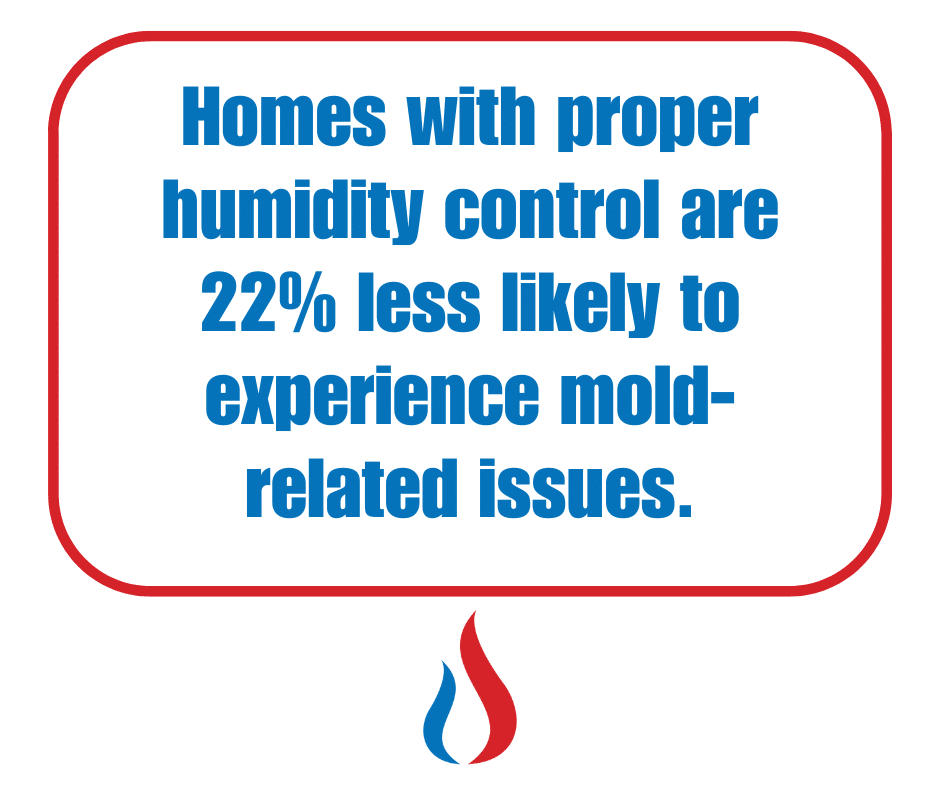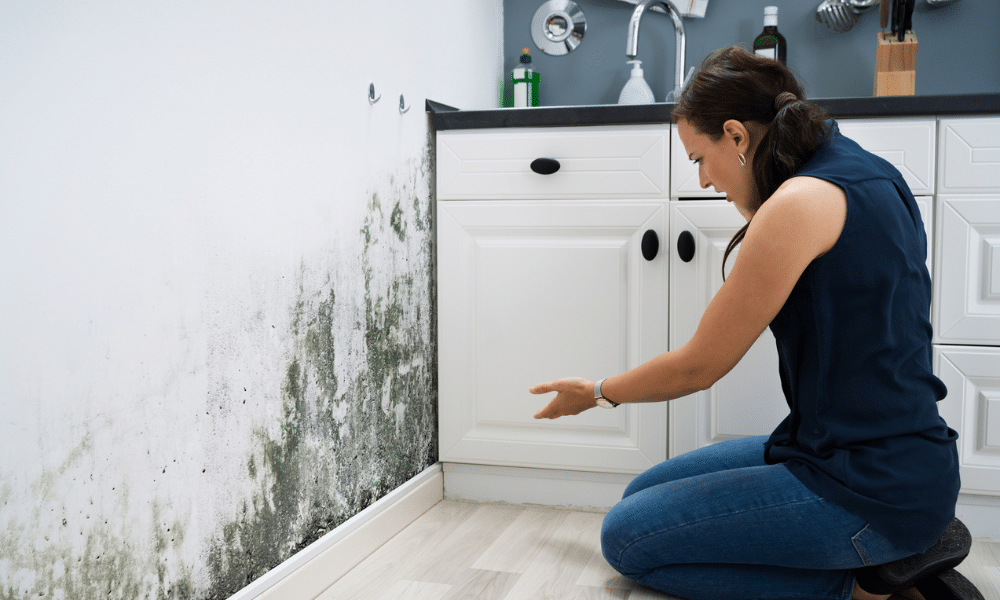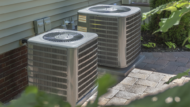Mold and mildew are common household issues that many people encounter but often struggle to differentiate. While both are types of fungi and thrive in damp environments, their characteristics, effects, and methods of removal differ significantly. Understanding the differences between mold and mildew is crucial for protecting your home and health. This guide explores the key distinctions between the two, their potential risks, and effective prevention strategies, particularly through improved HVAC practices.
What Is Mildew?
Mildew is a surface-level fungus that tends to grow in areas with high moisture levels. It typically appears as a white, gray, or yellow powdery film on surfaces like bathroom tiles, windowsills, and fabrics. Mildew is often associated with a musty odor, and while it can be unsightly, it is usually easier to clean and less harmful than mold. Unlike mold, which can penetrate deeply into materials, mildew remains on the surface, making it less likely to cause long-term structural damage.
One distinguishing feature of mildew is that it doesn’t penetrate deeply into materials. This makes removing it relatively easy with household cleaners or a mixture of vinegar and water. Regular cleaning can prevent mildew from spreading or reappearing. However, neglecting mildew can lead to more severe problems, as prolonged moisture in any area can create ideal conditions for mold growth, which is more challenging and costly to address. Consistently managing areas prone to dampness is key to keeping mildew under control.
What Is Mold?
Mold is a more aggressive and potentially harmful type of fungus. Unlike mildew, mold can penetrate deep into porous materials like wood, drywall, and carpets, making it much harder to eliminate. It typically appears in shades of green, black, or dark brown and often has a fuzzy or slimy texture. Mold spreads rapidly, especially in warm, damp environments, and often requires professional treatment to fully address, as improper removal can release spores and exacerbate the problem.
Mold not only affects the appearance of your home but also poses serious risks to its structural integrity. For instance, mold growing on drywall or wood can weaken these materials over time, leading to expensive repairs and safety concerns. Additionally, mold produces allergens and irritants that can negatively impact health, especially for those with respiratory conditions, allergies, or compromised immune systems. In severe cases, prolonged exposure to mold can contribute to chronic respiratory illnesses, emphasizing the importance of early detection and remediation to protect both your home and your health.
Key Differences Between Mold and Mildew
| Feature | Mildew | Mold |
|---|---|---|
| Appearance | White, gray, or yellow; powdery texture | Green, black, or brown; fuzzy or slimy |
| Depth of Growth | Surface-level | Penetrates porous materials |
| Health Risks | Minor respiratory irritation | Allergies, asthma, more severe risks |
| Removal Difficulty | Easy to clean with basic cleaners | Often requires professional remediation |
Why Mold and Mildew Matter
Both mold and mildew pose risks to your home and health, especially when left untreated. Here are some of the key reasons why addressing these fungi promptly is essential:
- Impact on Indoor Air Quality
Mold and mildew release spores into the air, which can compromise indoor air quality. According to the Environmental Protection Agency (EPA), poor indoor air quality contributes to respiratory issues and allergies. Mold spores, in particular, can trigger asthma attacks or exacerbate symptoms in sensitive individuals. - Structural Damage
While mildew is less invasive, mold can cause significant structural damage over time. A National Association of Home Builders study found that unchecked mold growth on drywall or wood can reduce a home’s resale value by up to 20%. - Unpleasant Odors and Aesthetics
Both mold and mildew produce musty odors that can permeate a home. Mold stains on walls, ceilings, or fabrics can also be difficult to remove, leaving lasting damage to your property’s appearance.
Preventing Mold and Mildew: HVAC Measures to Take
One of the most effective ways to prevent mold and mildew is by controlling moisture and ensuring proper ventilation. Your HVAC system plays a critical role in maintaining a healthy indoor environment. Here are some preventive measures to consider:
1. Improve Ventilation
Proper airflow throughout your home is essential for reducing moisture buildup, creating ideal mold and mildew conditions. Ensure that your HVAC system is well-maintained and that ventilation systems in bathrooms, kitchens, and laundry rooms function properly.
Investing in solutions like exhaust fans or whole-home ventilation systems can help keep the air circulating, preventing damp areas from developing.
 2. Control Humidity Levels
2. Control Humidity Levels
Mold and mildew thrive in environments where humidity levels exceed 60%. Maintaining a balanced indoor humidity level—ideally between 30% and 50%—is crucial for preventing their growth.
A whole-home dehumidifier integrated with your HVAC system can help regulate moisture levels throughout your home. These systems are particularly beneficial in Tampa’s humid climate, where excess moisture is a common problem. According to the National Association of Realtors, homes with proper humidity control are 22% less likely to experience mold-related issues.
3. Regular HVAC Maintenance
Scheduling routine HVAC maintenance is another key step in preventing mold and mildew. Dust, debris, and moisture can accumulate in your HVAC system, creating conditions that allow fungi to thrive. Regular inspections by professionals can identify and address potential issues before they escalate.
During maintenance visits, technicians can clean air ducts, replace filters, and check for areas where condensation might occur. This reduces the risk of mold and mildew and improves the overall efficiency of your HVAC system.
How to Remove Mold and Mildew
If you’ve already noticed mold or mildew in your home, here’s how to address them:
Removing Mildew
Mildew can often be removed using simple household solutions:
- Mix one part white vinegar with two parts water in a spray bottle.
- Apply the solution to the affected area and let it sit for 10 minutes.
- Scrub the surface with a brush or sponge and rinse with water.
Be sure to dry the area thoroughly after cleaning to prevent future growth.
Removing Mold
Mold removal is more complex and often requires professional help, especially if it has penetrated deeply into walls, ceilings, or flooring. Attempting to remove mold without proper safety equipment can release spores into the air, potentially worsening the problem.
Professional mold remediation services typically include:
- Identifying the source of moisture and stopping it.
- Safely removing and disposing of mold-affected materials.
- Cleaning and disinfecting the area to prevent recurrence.
The cost of mold remediation varies but generally ranges from $500 to $6,000, depending on the extent of the damage (HomeAdvisor).
When to Call a Professional
While minor mildew issues can often be managed on your own, mold problems require professional attention when:
- The affected area exceeds 10 square feet.
- Mold has penetrated porous materials like drywall or wood.
- You notice persistent health issues among household members, such as allergies or respiratory problems.
Ignoring mold can lead to serious health and structural issues, making it critical to address the problem promptly.
How an HVAC Professional Can Help with Mold or Mildew
An HVAC professional plays a crucial role in preventing and addressing mold or mildew in your home. They can assess your system for potential issues, such as poor ventilation or areas where moisture accumulates, both of which contribute to fungal growth. By optimizing airflow and ensuring proper ventilation, they help reduce humidity levels, which is key to preventing mold and mildew.
Additionally, HVAC professionals can install whole-home dehumidifiers to maintain balanced moisture levels and inspect ductwork for signs of mold contamination. Regular maintenance, such as cleaning coils and replacing filters, also prevents moisture buildup in the system. If mold has already developed, an HVAC technician can identify the source, recommend solutions, and work to mitigate the problem, ensuring your home remains safe and your indoor air quality stays healthy.
Final Thoughts on Mold and Mildew
Understanding the differences between mold and mildew is the first step in protecting your home and health. While mildew is easier to clean and less harmful, mold requires more serious intervention due to its ability to spread rapidly and penetrate materials deeply, potentially causing structural damage and health issues.
Preventive measures, such as improving ventilation, controlling humidity, and maintaining your HVAC system, can significantly reduce the risk of mold and mildew in your home. Simple actions like using a dehumidifier, cleaning damp areas regularly, and ensuring proper airflow can make a big difference. By staying proactive, you can maintain a clean, healthy indoor environment and avoid costly repairs or long-term damage caused by unchecked fungal growth.
When in doubt, consult professionals to ensure mold and mildew issues are properly addressed, especially if the affected area is large or persistent. Expert intervention can not only resolve existing problems but also help identify underlying moisture issues that may lead to recurrence. Protecting your home from mold and mildew ensures a safer, healthier space for you and your family.







